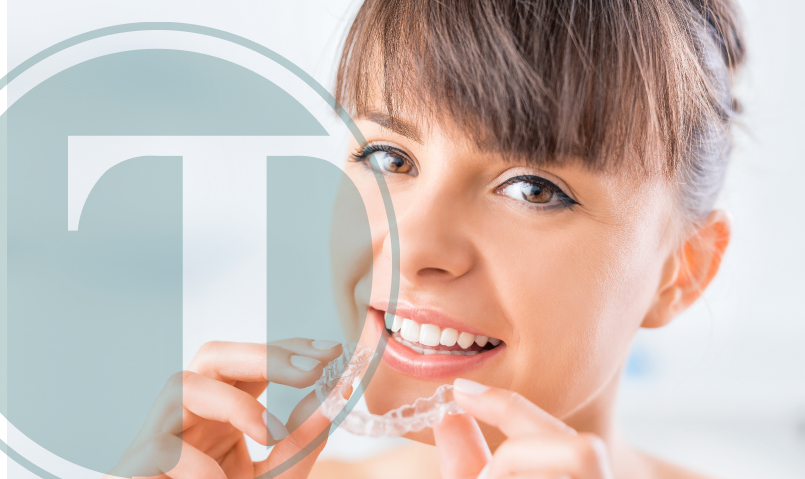3 Common Reasons You Might Not Be a Candidate for Invisalign

When Is Invisalign Not the Best Choice?
At Tomasik Family Dental, we find that Invisalign is an excellent choice for most people, but there are situations when it’s not the most effective option. Our dentists will consider several factors during your consultation to decide whether or not you’re a good candidate for Invisalign when it comes to straightening your smile. These three situations are the most common reasons why traditional braces may be preferable over Invisalign.
1. Age and Jaw Development
Invisalign usually isn’t the best choice for young children and preteens. Although the Invisalign brand does have a special aligner system marketed for pediatric use, this doesn’t necessarily mean every child is a suitable candidate for treatment.
There are two reasons why kids aren’t generally candidates for Invisalign.
Jaw Maturity
Invisalign isn’t typically recommended if a child still has baby teeth because the aligner system is designed for realigning permanent, adult teeth and a mature, dense jaw. Most children don’t lose their baby teeth until 12 to 13 years of age, sometimes later.
Braces are usually more effective in early orthodontic care that involves moving a combination of baby and adult teeth.
Personal Responsibility
To straighten your smile successfully with Invisalign, the clear aligners must be worn a minimum of 20 hours per day, with 22 hours being strongly recommended. However, since the aligners must be removed before brushing, meals, or non-water beverages, there are a lot of opportunities for a child to lose their aligners or forget to replace them.
Some kids may also not like the feeling of wearing Invisalign aligners, especially when a new aligner set may cause some temporary discomfort. It can be tempting for them to remove the aligners while at school or away from home without understanding the consequences.
As a parent, it’s important to consider your child’s interest in Invisalign and their level of personal responsibility from an unbiased perspective. If your child isn’t yet ready for this responsibility or they’re forgetful, braces will be the better choice.
2. Malocclusion Complexity
Malocclusion is the proper term for a bad bite or improperly aligned teeth. There are several different types of malocclusions, but all of them can be condensed into three distinct classes.
Class 1 malocclusion is an overlapping of the upper teeth over the lower teeth. This class is more of a cosmetic issue than functional, and can often be fixed with Invisalign with great success.
Class 2 malocclusion presents similar to Class 1, but the difference is the severity of the overlap. A Class 2 bite affects the alignment of the jaw and teeth and could be advanced enough that Invisalign may not be effective or efficient. A dentist will need to evaluate your bite alignment in person to determine whether Invisalign will work. Thankfully, Invisalign continues to advance its aligner technology, and more Class 2 cases can be treated now than before.
Class 3 malocclusion is when the lower teeth overlap the upper teeth, forming an underbite. Invisalign may be able to treat mild Class 3 cases, but in most situations, braces will be the best solution. Your dentist will be able to determine which orthodontic solution is best for your Class 3 underbite.
3. Maintenance Requirements
You’re an adult, and your malocclusion isn’t severe, that must mean you’re an ideal candidate for Invisalign, right? Only you can answer this question.
Invisalign is undoubtedly the most favored form of orthodontics for adults, but that doesn’t mean it’s automatically the right solution for every person. Just as a parent should carefully weigh the pros and cons of Invisalign for a child, you should take a similar self-inventory to decide if the responsibility and maintenance of Invisalign are realistic.
If you struggle with self-discipline, are often forgetful, or have a medical condition that causes memory lapses, remembering to wear and replace aligners can be tricky. Even though you may like the idea of clear aligners, traditional braces may be the most effective route to straighten your smile.
You’ll also need to commit to cleaning your aligners regularly after you take them out for each meal, and at the end of the day, by rinsing them and brushing them with a soft toothbrush. Don’t use abrasive products such as toothpaste, as this may scratch your aligners and make them more opaque. You’ll also need to brush your teeth after each meal, as not doing so could mean that residual food products stain your aligners.
Find out if you’re a candidate for Invisalign at Tomasik Family Dental.
Settling on an orthodontic treatment option is a big decision, but the dentists at Tomasik Family Dental can guide you toward the most effective solution based on the class of malocclusion you have and your personal needs.
Invisalign is currently the only orthodontic treatment we offer in-office, but in the event braces are necessary, we can refer you to a local orthodontist who can facilitate treatment. Even with braces, we’ll continue to protect and care for your non-orthodontic dental health needs.
To find out if Invisalign is right for you, schedule a consultation with one of our dentists near Bee Cave and Lakeway, TX. Calling our office during business hours is the quickest way to book an appointment, but you can also use this online form.